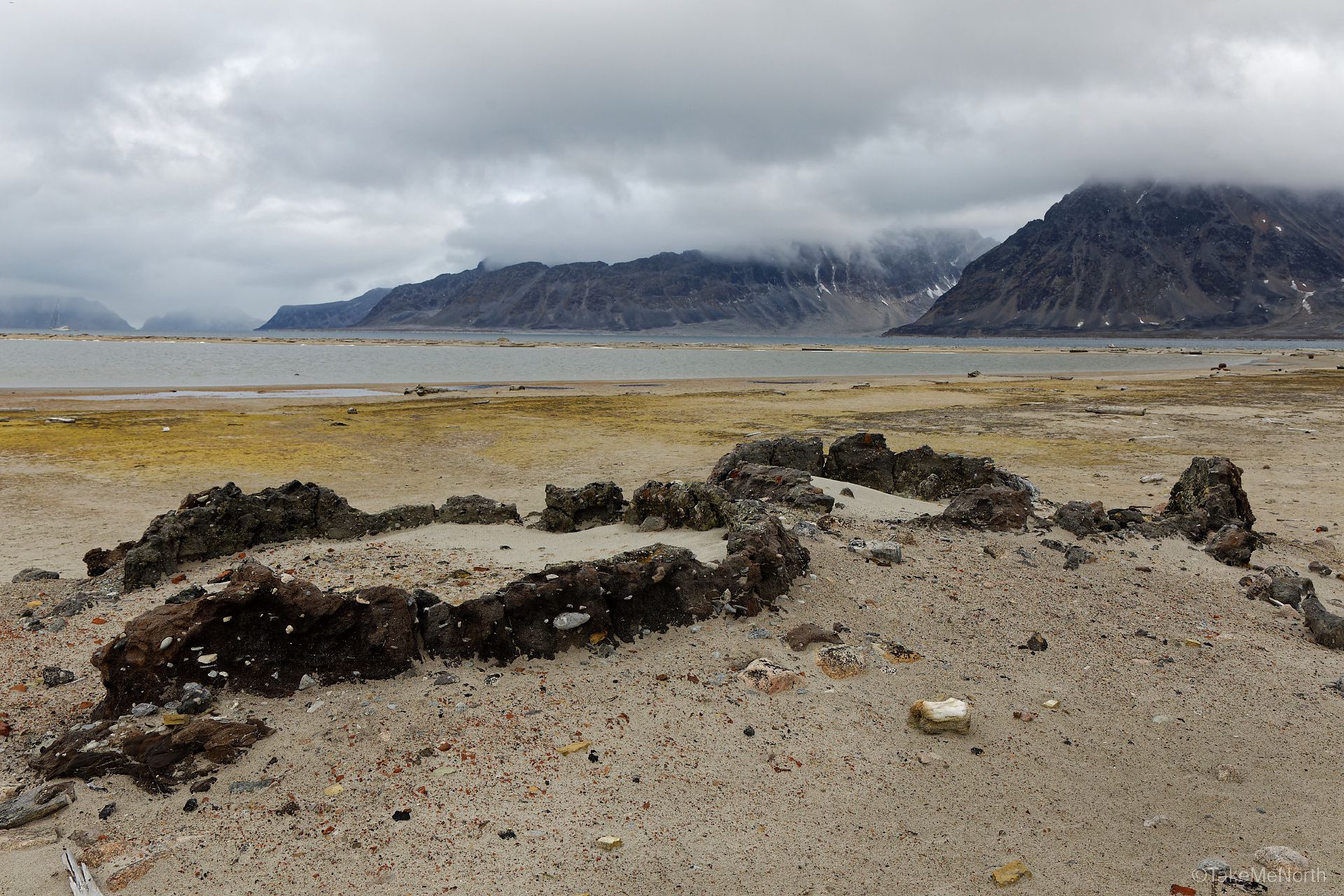The Discovery of Spitsbergen in 1596 by Willem Barentsz sparked stories all over Europe, speaking of rich whaling grounds of the arctic seas. Tales spoke about an abundance of Greenland Right whales, so many that “you could cross the sea jumping from one whale to the other”.
The right whale
The Greenland Right whale, which we now know as the Bowhead whale, was called ‘Right whale’ because it was the right whale to kill. They moved slowly so they could be approached in a rowing boat. Once they were killed, they floated to the surface, in contrast to most other whale species. Their fat, or blubber, was boiled into oil. The resulting oil could be used as lamp fuel or as an ingredient for soap and was sold for good money in Europe. Additionally, the baleens of the bowhead whale were used in upper-class clothing, like dresses, corsets, and umbrellas.
Dutch whaling operations
The first Dutch whaling expedition departed for coast of Spitsbergen in 1611. The Dutch had no experience hunting whales, which resulted in low results. The following year they hired some experienced Basque whale hunters from Spain, but unfortunately, a clash with the British Muscovy Company caused another disappointing profit. It was clear that things needed some organization.
In 1614, the Noordsche Compagnie was established. The merchants formed a united front against the English Muscovy Company and gained support of Dutch Provinces and their warships. In the first years, they sailed on the arctic island Jan-Mayen. In 1618, they moved their operations to Amsterdam Island (Amsterdamøya) on the northwest coast of Spitsbergen. The site was called Smeerenburg (usually translated to blubber town).
Whaling at Smeerenburg
Smeerenburg gradually grew into a small settlement. It had primitive living quarters supporting a couple of hundred men. 16-18 wooden buildings are documented, including a small fortification. Each Dutch city that participated in the Noordsche Compagnie had its own quarters. However, the story that Smeerenburg was a full-fledged town with 10.000 inhabitants, a church, shops, and a brothel can be considered a myth. Maybe an early form of marketing?
Amsterdam Island has a hill that is perfectly suitable as a lookout for whales. Edible scurvygrass grows on the hill, so the whalers named it Salaetbergh (salad mountain). The Spotters at Salaetbergh guided the 6-men rowing crews to the whales. When the boats got close enough, a harpooner pushed his harpoon into the whale. The dangerous fight to the death between the boat crew and the whale commenced. Once the whale was dead, the land crew towed it onto the beach. The whale was cut into bible-sized patches, called books or bible leaves. These patches were thrown into 3-meter copper kettles and boiled into oil.
Throughout the years, these kettles were improved. Eventually, these kettles transformed into ovens with brick foundations and chimneys. Smeerenburg had 15 of these ovens in its heydays (7 double and one single).

The concrete-like foundation of a blubber oven, made with a mixture of whale fat and sand.
The foundation of many of the furnaces is still visible at Amsterdamøya. Some foundations have been lost in the sea because of changes in the shoreline. A double oven at the beach has recently been claimed by a group of sun-bathing walruses.

Walruses at Amsterdamøya beach.
Winterover in darkness
Whaling on Spitsbergen was a seasonal activity. The ships left the Dutch republic in spring with whalers and building materials like timber for a three-week voyage. They usually left the site in September when whaling became too dangerous because of the drift ice, leaving the site unguarded. After a site at Jan Mayen was found looted in spring, they decided that volunteers should remain to guard the assets throughout the darkness of the arctic winter.
In 1633 the Smeerenburg wintering was successful, but the next winter all 7 winter crew members died of scurvy. Next spring, their bodies were found, their coffins buried in the frozen ground of Smeerenburg.
Permafrost
Permafrost is ground that continually remains frozen. The permafrost layer at Spitsbergen used to be near the surface. Since the 1970s the average temperature at Spitsbergen has risen by 4°C, which causes the upper layers of permafrost to melt. Graves that were once in the ice and have been preserved for nearly 400 years, will slowly start to decay. This raises an ethical dilemma: protect the archeological history, or let the sailors have their peace?

A 17th century grave of a dutch whaler getting pushed out of the permafrost.

An ancient whale bone at Smeerenburg.
The decline of Smeerenburg started in the 1640s. The Noordsche Company ceased to exist in 1643 and as a result the catching quota also disappeared. In the following years, the number of killed whales quickly spiraled out of control to unsustainable levels. Whales became scarce in the bay. At the same time, beach-based processing of whales was also slowly replaced by processing at sea. The last documented use of Smeerenburg was in 1657. The ruins of Smeerenburg are part of the North-West Spitsbergen National Park since 1973.

A magnificent view at the nearby Smeerenburgbreen.



